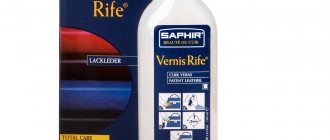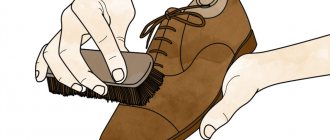I know how it goes - you get so caught up in creating your dream project that you forget to think about the yarn you used and the care of your handmade knitted items.
This article contains instructions on:
- hand wash
- machine washable
- drying knitted items
You will also learn about the different types of yarn and how they behave in the wash.
There is no definitive answer to the question of how to wash handmade knitted items as it really depends on the yarn used and the type of item. Because our knitted projects aren't finished the moment they come off the knitting needles, you need to know how to give the project an attractive, finished look.
The truth is that we should always think about how to properly wash and care for handmade knitted items before we begin. This can save you a lot of time, headaches and worry later on.
Once you learn how to care for your knitted items , you'll be much more willing to try new and exciting knitting projects because you'll be ready to maintain a well-groomed look and the attitude of a high-level craftsman will stick with you!
Content
- A few rules before you start knitting Always, Always check the yarn label
- Make a knitted pattern
- be careful
- Washing protein yarn
- 4 things to remember when hand washing:
- 6 things to remember when machine washing
- Wet fixation
A few rules before you start knitting
Always, Always check the yarn label.
The most important rule for washing knitted clothing is to check the label of your yarn . Don't just throw away the paper ring around your ball of yarn - it carries important information! These instructions come directly from the yarn companies, so they know what they're talking about.
Each symbol has a specific meaning, so it's useful to know what they are.
Make a knitted pattern
If you are knitting a swatch for sizing before starting your project, do not unravel it. Use this pattern to practice washing your knitted item before washing the entire item. This is an easy way to see how your item will react to a washing method without the fear of ruining something you care about.
be careful
It's so easy to accidentally make a mistake and ruin a piece you've spent hours lovingly knitting. Avoid the sadness and anger that comes with such a mistake. Work carefully and double check the instructions. And if you don't like a certain washing instruction, follow your gut!
How to wash different types of yarn?
There are so many different types of yarn with different textures, colors and draperies . The number of options truly seems endless.
Knowing how to choose yarn for knitting is an important task.
But it's also important to think about washing handmade knits when you're choosing yarn, as you'll have to take care of the items you're making.
In general, there are three main types of fibers:
- protein fiber (animal origin)
- vegetable fibers
- synthetic fibers
Protein and plant fibers are natural , while synthetic fibers are artificial . Depending on the fiber the yarn is made from, there will be different washing instructions.
Washing protein yarn
Protein fibers are those that come from animal hair. Examples include wool, alpaca and cashmere.
Never, ever wash or machine dry protein fibers (unless they're super washable, but even then, be careful).
Machine washing can cause the yarn strands to stick to each other and may never untangle. It is best to wash items made from protein fiber threads by hand in cold water and then lay them flat to dry.
Washing yarn made from plant fibers
Plant fiber threads are those that, as the name suggests, are made from plants. Examples include:
- cotton
- linen
attention to the labels here because plant fibers have different washing instructions, but in general they are machine washable. For example, cotton yarn is a denser yarn and can take a little more load than protein fibers. Pure cotton yarns can be machine washed on a gentle cycle, and some can be tumble dried.
Be sure to lay out cotton to dry because it can stretch and sag a lot when hung to dry.
Washing synthetic fiber yarn
Synthetic threads are those that are partially or entirely man-made. Examples include:
- acrylic
- polyester
- viscose
Again, instructions vary, but generally these threads are also machine washable . For example, acrylic yarn can be washed and dried with your regular laundry because it does not shrink.
Washing mixed fiber yarns
Many yarns are mixtures of different types of fibers. Wool blends are very popular, especially in regular craft stores. Because these blends include multiple types of fibers, washing instructions can vary greatly, so it's best to check the yarn label.
Wool
Wool yarn is elastic, retains heat well, is not very hygroscopic, but due to its structure it is prone to matting, and under mechanical stress, pills form on it. An unpleasant feature of wool yarn is that it can shrink when washed.
To reduce the disadvantages of wool yarn, as well as to impart other positive qualities, fibers of plant or artificial origin are added to it.
Based on the listed properties of wool yarn, we can come to the conclusion that wool requires very delicate handling during washing, it should not be twisted or subjected to strong mechanical stress so that the thread does not lose its elasticity and strength; Wool products should not be exposed to high temperatures or temperature fluctuations.
To give products made from colored wool or half-woolen thread a brighter look, add table white vinegar to the water when rinsing, at the rate of two to three spoons per ten liters of water.
When washing woolen items, use water at the same temperature for both washing and rinsing, otherwise the yarn may pill.
To add softness to high-quality Angora wool products, you can add hair conditioner or a teaspoon of glycerin to the rinse water.
To make mohair and angora items extra fluffy and soft, place them in the freezer for several hours, first wrapping them in a bag.
It is not recommended to wash items made from various types of wool yarn frequently; to give them freshness, it is enough to regularly air them in the fresh air.
Adding borax to the water when rinsing will help restore white woolen items to their original appearance.
Hand washing knitted items
4 things to remember when hand washing:
- Wash a new item separately for the first time , especially if it is a bright color. Sometimes it takes a little time for the colors to fully set without damaging other things. Be sure to wash your new item separately at least once to make sure the dye doesn't wash out.
- Do not subject knitted items to excessive stress . You may accidentally felt the wool on your items or stretch them if you apply too much pressure.
- Don't wring out your products. Just like the advice above, push-ups can lead to some very unfortunate results, such as collapsing or spraining (never returning to normal).
- Use delicate detergents for washing.
Stain removal and whitening
- If the knitted product is not just dirty, but has stubborn stains, then it should be soaked in water with the addition of shavings from laundry soap. You shouldn’t do this for a long time, otherwise the product may lose color and shape, an hour and a half is enough.
To return white wool knitwear to its original appearance, adding a small amount of borax (borax) to the water during the last rinse will help.
- You can bleach darkened items made from cotton, linen and bamboo yarn using oxygen bleach.
- To eliminate yellowness on white knitted items, you can rinse the item in water with citric acid.
- You can return the white color to knitted items made from synthetic yarn with a solution: 10 tablespoons of soda and 2 tablespoons of ammonia 3% per 10 liters of warm water. Soak the item for several hours (3-5). Then wash with powder to remove the softened particles that give the gray tint.
- Using laundry soap, you can lighten items made from almost all types of yarn; you should grate the laundry soap and dilute it with hot water, then add cold water and soak the product in this solution for several hours, or simply lather it with laundry soap and put it in and then rinse it well. After each procedure, the product becomes lighter.
How to wash knitted items by hand?
If you only need to wash a small number of items, you can use the sink or large bowl to soak them in cool water, then you will need to gently wring out the water and then wrap the items in a thick towel to get them as dry as possible.
If you have a large number of items to wash, you can put them in laundry bags to protect them and mix detergent and water in the washing machine.
If you don't have a top-loading washing machine, you can still use the same process, but you'll need a large, clean tub to do the soaking in.
How to iron?
If, after drying and ironing, creases and wrinkled areas appear on the item, you can iron it. Rules to follow:
- Products made from pure wool should not be ironed, even on the reverse side. They can only be steamed through thick gauze. The steam generator must be kept at a distance of 10 cm.
- Mixed fabrics are ironed with the steam function turned on.
- To avoid damaging the product, always turn it inside out and use gauze.
- If ironing is to be done, there is no need to wait for the fabric fibers to dry completely.
If a scorch suddenly appears on the fabric, you can make it less noticeable by wiping the area with a cloth soaked in hydrogen peroxide and ammonia. The components are taken in equal quantities.
Machine washable knitwear
Knits are machine washed the same way as anything else, except on a softer cycle . Always remember how much time you spent on your project when figuring out how to care for knits.
6 things to remember when machine washing
- Check, double-check and triple -check the label.
- Place items in a mesh laundry bag. This bag will help keep your items from being overloaded or getting caught on anything else in the washing machine.
- As with hand washing, wash a new handmade item separately for the first time.
- Wash on delicate cycle. You spent many hours working on this handmade knitted item; It's best to treat it delicately.
- Wash in cold water.
- Do not tumble dry knitted items unless the label says it is okay to do so. And even then, be careful. It is always safer to lay the item out to dry.
Helpful Tips:
- If scorch marks appear on the product during ironing, apply the raw onion mixture to the area and rinse in water after an hour.
- Removing scorch marks from silk fiber is difficult, but possible. To do this, apply soda slurry to the defect site, wait until the product dries, and sweep away unnecessary residues with a brush.
- The resulting scorch mark on a white woolen item is removed with a solution of peroxide and ammonia in a 1:1 ratio.
Guided by clear rules, your favorite knitted items will last for many years.
How to dry knitted items?
After washing, you will most likely need to fix your item so that it returns to its shape after drying .
Knowing how to fix a product is an important skill that you will use forever!
There are three different ways to secure knitting:
- wet
- dry
- cold
Wet fixation
Wet fixing is the most common fixing method and is used after hand washing a knitted item or when you take it out of the washing machine.
Do not twist or wring your product too hard, as you may not be able to repair the damage.
- First, immerse your knitted item in cool water for 20-30 minutes.
- Then place on a towel and roll it up to gently squeeze out excess liquid.
- Finally, lay your clothes flat to dry. If I want to stretch a certain part, you can use pins to achieve the desired shape.
Steam (dry) fixation
Dry fixing can only be used on fibers that can be treated with both moisture and steam. Double check the label of your yarn. Whatever you do, do not touch the item with the iron. You may cause irreversible damage.
Cold fixation
Cold fix is used for fibers that can be dampened but not heated or soaked through . This method is similar to the dry fix method, but instead of using steam from an iron, you use a spray bottle filled with cool water.
Artificial yarn
Viscose is the first artificial fiber produced by chemical processing of cellulose. Products made from viscose are soft and pleasant to the touch and have the shine of silk. The advantages include good breathability and hygroscopicity, the disadvantages are the low elasticity of the fibers, which is why the products can stretch greatly after washing. Therefore, washing should be very delicate, at low temperatures (30-40 degrees). It is strictly not recommended to twist products made from viscose thread.
Because of its similarity to wool yarn, acrylic is popularly called “artificial wool.” But at the same time, acrylic has a number of advantages: it does not require maintenance, is resistant to light, acids and weak alkalis. Acrylic products do not shrink.
Machine washing is not contraindicated for acrylic products. But it is still better to use the delicate wash mode and place the product in a special bag. You need to spin the product at low speeds. To dry the product, use horizontal surfaces to avoid deformation.











